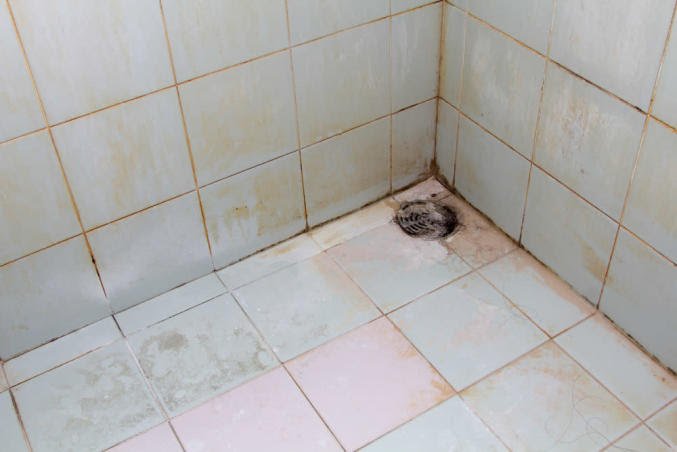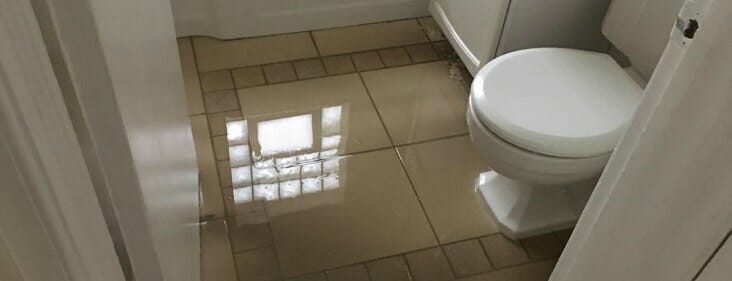Aspects Contributing to Water Deterioration in the Bathroom
Aspects Contributing to Water Deterioration in the Bathroom
Blog Article
They are making several great points relating to How to Repair and Prevent Bathroom Water Damage? in general in this article beneath.

Water damage commonly occurs in the restroom because of the water used everyday. Occasionally, the damage could be a little mold and mildew from the shower. Various other times, it's substantial damages on your flooring. Whatever it is, it is constantly good to know the reason and also avoid it before it happens.
This guide will certainly experience several of the typical root causes of water damage in the washroom. We will certainly likewise examine what you can do to avoid these causes from harming your washroom. Let's dive in.
5 Common Causes of Water Damage in Restrooms
These are the common factors you would certainly have water damage in your bathrooms as well as how you can identify them:
Ruptured or Dripping Pipelines
There are several pipelines lugging water to various parts of your washroom. Some pipelines take water to the commode, the sink, the faucets, the shower, as well as numerous other places. They crisscross the tiny location of the restroom.
From time to time, these pipelines can obtain rustic and ruptured. Various other times, human activity could trigger them to leakage. When this happens, you'll locate water in the corners of your washroom or on the wall.
To detect this, keep an eye out for gurgling wall surfaces, mold and mildews, or mold. Call a professional emergency situation plumbing professional to repair this when it happens.
Cracks in your wall tilesv
Bathroom wall floor tiles have been specially made for that function. They safeguard the wall surface from wetness from people taking showers. Nonetheless, they are not indestructible.
Occasionally, your shower room wall tiles fracture and also allow some dampness to leak right into the wall surface. This can possibly destroy the wall if you do not take any type of activity. If you observe a split on your wall surface tiles, fix it quickly. Do not wait up until it damages your wall.
Overruning toilets and also sinks
As humans, often we make mistakes that can cause some water damage in the washroom. For example, leaving your sink tap on can cause overruning and damage to various other parts of the washroom with dampness.
Also, a faulty toilet can trigger overflowing. As an example, a damaged toilet handle or various other parts of the tank. When this occurs, it could harm the floor.
As soon as you observe an overflowing sink or commode, call a plumbing professional to help take care of it right away.
Roofing Leaks
In some cases, the problem of water damage to the bathroom might not originate from the washroom. For instance, a roofing leakage could create damages to the bathroom ceiling. You can find the damage done by considering the water stains on the ceiling.
If you discover water spots on your ceiling, inspect the roof to see if it's harmed. Then, call a professional to assist address the problem.
Excess Dampness
It's cool to have that long shower and splash water while you hem and haw and also imitate you're executing, yet often these acts can cause water damage to your shower room.
Spraying water around can create water to head to corners and create mold and mildews. View how you spread out excess dampness around, and when you do it, clean it up to prevent damage.
Final thought
Water damage to your restroom can be frustrating. However, you can handle it if you protect against a few of the causes discussed in this guide. Call a specialist emergency situation plumber if you observe any type of severe damages.
Common Causes of Water Damage in a Bathroom
Water damage can appear virtually anywhere in your home, but bathrooms and basements are the two most common areas. It’s easier to spot causes and signs of water damage in an unfinished basement, but that doesn’t mean it’s any less severe to have water damage occur in your bathroom.
Spotting Signs of Bathroom Water Damage
The bathroom is probably the most common place where you’ll use water in your home. Because of this, there’s a relatively high risk of sustaining water damage. The longer water damage goes untreated, the worse it can get. Therefore, you need to know what signs to look for and deal with any damage as soon as possible.
There are often items like rugs, bottles, towels, and so on crammed in every corner of the typical bathroom, which can trap moisture and hide budding problems. But what usually causes the most water damage in a bathroom? How can you spot it, especially with so many items in the way? This article addresses several common ways to notice, prevent, or fix bathroom water damage.
A Recurring or Persistent Musty Odor
Wherever there’s water damage, you almost always find small spots of mold, or even a full-blown infestation. When you leave mold to thrive and grow, it creates a stinking, musty odor that’s pretty hard to miss. Don’t leave musty smells unaddressed—try to find the source so that you can have it repaired before more damage occurs.
Damaged Grout or Caulk
When these sealing agents fail, virtually nothing prevents water from seeping past the barrier, causing water damage and mold growth underneath wall and flooring tiles. Damaged showerheads, spigots, grout, or caulking, combined with excessive moisture, create the perfect environment for mold to thrive.
Loose Tiles or Spongy Floors
Moldy and water-damaged walls make it more difficult for tiles to stay in place, which can cause them to become loose. In addition, persistent moisture on a bathroom floor can result in water damage to the subflooring layer, causing it to degrade, lose integrity, and feel spongy.
Stubborn Growth
If there’s visible mold in your bathroom that you’ve removed more than once, the most likely reason it keeps coming back is a deeper infestation in the walls or floors. It’s critical to deal with this problem immediately to prevent further damage and new or worsening health issues.
https://advantaclean.com/blog/common-causes-of-water-damage-in-a-bathroom/

Common Causes of Water Damage in a Bathroom
Water damage can appear virtually anywhere in your home, but bathrooms and basements are the two most common areas. It’s easier to spot causes and signs of water damage in an unfinished basement, but that doesn’t mean it’s any less severe to have water damage occur in your bathroom.
Spotting Signs of Bathroom Water Damage
The bathroom is probably the most common place where you’ll use water in your home. Because of this, there’s a relatively high risk of sustaining water damage. The longer water damage goes untreated, the worse it can get. Therefore, you need to know what signs to look for and deal with any damage as soon as possible.
There are often items like rugs, bottles, towels, and so on crammed in every corner of the typical bathroom, which can trap moisture and hide budding problems. But what usually causes the most water damage in a bathroom? How can you spot it, especially with so many items in the way? This article addresses several common ways to notice, prevent, or fix bathroom water damage.
A Recurring or Persistent Musty Odor
Wherever there’s water damage, you almost always find small spots of mold, or even a full-blown infestation. When you leave mold to thrive and grow, it creates a stinking, musty odor that’s pretty hard to miss. Don’t leave musty smells unaddressed—try to find the source so that you can have it repaired before more damage occurs.
Damaged Grout or Caulk
When these sealing agents fail, virtually nothing prevents water from seeping past the barrier, causing water damage and mold growth underneath wall and flooring tiles. Damaged showerheads, spigots, grout, or caulking, combined with excessive moisture, create the perfect environment for mold to thrive.
Loose Tiles or Spongy Floors
Moldy and water-damaged walls make it more difficult for tiles to stay in place, which can cause them to become loose. In addition, persistent moisture on a bathroom floor can result in water damage to the subflooring layer, causing it to degrade, lose integrity, and feel spongy.
Stubborn Growth
If there’s visible mold in your bathroom that you’ve removed more than once, the most likely reason it keeps coming back is a deeper infestation in the walls or floors. It’s critical to deal with this problem immediately to prevent further damage and new or worsening health issues.
https://advantaclean.com/blog/common-causes-of-water-damage-in-a-bathroom/
Hopefully you enjoyed our part about How to Repair and Prevent Bathroom Water Damage?. Thanks for taking time to read our blog. Be sure to take the time to share this content if you enjoyed it. We truly appreciate reading our article about How to Repair and Prevent Bathroom Water Damage?.
Schedule Here Report this page